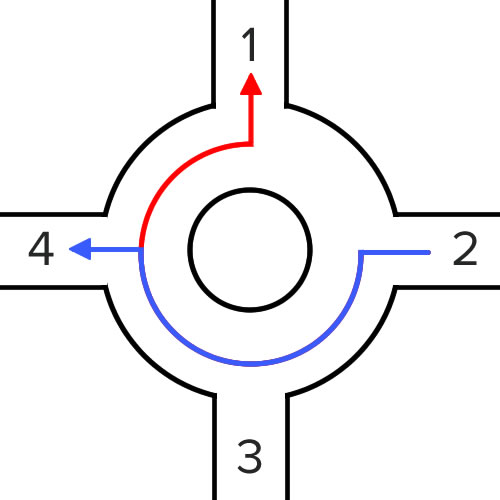It's been quite a while since I last wrote a blog post - so let's start off with a post about something that comes up in everyday life - roundabouts. Why roundabouts? As you may or may not know, I moved to the Gold Coast in Queensland, Australia last year. Queensland loves its roundabouts - there are roundabouts everywhere. There is a roundabout wherever in other places would simply be a 4-way junction.
What does this mean for us? It means that you run into roundabouts all the time - and roundabouts are useful because they slow down traffic. I walk to work everyday - so having cars move slower because of a roundabout is fantastic for me. It means I can cross roads with a little more safety than usually.
Now, being a statistician, there's always the tendency to look at things with a little more analysis than usual. For example, here's a 4-way roundabout, not unlike the one near the office I work at.
Now - there are interesting observations we can make from something as simple as this - the path I labeled number 1 actually leads to an outdoor car park for the office workers and park visitors that are nearby.
Why is this important information? It means cars won't be coming from that direction very often until it comes time for people to leave the office. It also means very few cars will be going into that exit since it doesn't really lead anywhere.
Let's go on to the other paths. Path no. 2 leads towards a main highway, path no. 3 leads towards another main road, and path no. 4 leads to a shopping centre.
Why is this useful information? It tells you which trajectories of the roundabout are the most likely. The most likely paths given the source of the car:
Unfortunately, I am too sleepy to continue for now... more on how to use this information in Part 2!




